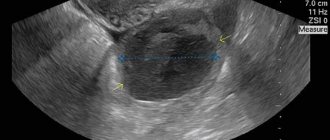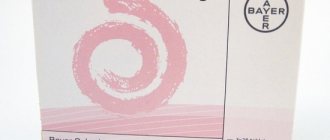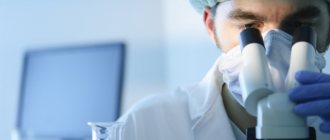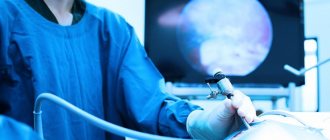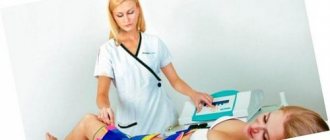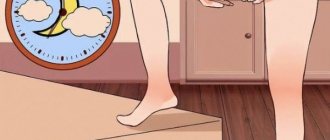Human chorionic gonadotropin is a pharmacological agent and belongs to the group of hormonal agents. Most often it is known as a pregnancy hormone. After successful conception, this hormone begins to be intensely released. Determining the level of hCG is one of the accurate diagnostic methods.
The topic of human chorionic gonadotropin remains relevant today. This hormone is actively used to stimulate ovulation, that is, the release of an egg from the ovary into the fallopian tube, due to a burst follicle. It is used in both sexes for medical reasons. What problems are solved thanks to this hormone and what effect it has on the body - this will be discussed in more detail in the article.
Recommendations for dilution of gonadotropin
It is recommended to dilute Gonadotropin immediately before use in the following sequence:
- Without opening the bottle, remove the protective plastic cap;
- wipe the rubber stopper with alcohol;
- draw the amount of solvent specified in the instructions into the syringe;
- carefully, along the wall, insert into the container with the powder.
The drug should not be shaken or crushed vigorously, as such actions can damage its structure and reduce its effectiveness.
The solution remaining after the injection can be stored in the refrigerator, separate from food, for 3-4 days. It must be taken into account that every day the effectiveness of the polypeptide will decrease, and after 10-14 days it will completely lose its pharmacological properties.
How to dilute Gonadotropin when the drug is packaged in doses insufficient for a one-time administration? In this situation, professionals recommend following the instructions and not dissolving two portions of powder in one dose of solvent, since the concentration of the active substance is also of no small importance.
Most often, gonadotropin is used in sports and bodybuilding, but its application is much more extensive. For athletes, it helps produce more testosterone and has an anabolic effect; for women, hCG therapy is sometimes required not only during pregnancy, but also before it. Restoring the menstrual cycle, improving the functioning of the corpus luteum, stimulating follicles - all this requires the use of this product. How to take gonadotropin in all these cases so as not to harm yourself?
Pharmacokinetics
Chorionic gonadotropin, after entering the body, is well absorbed and then excreted within 8 hours by the kidneys. With daily use, accumulation of the drug is observed. The maximum concentration in the blood occurs from 4 to 12 hours.
Advantages and disadvantages of the drug:
- despite the fact that the drug is used for infertility and impaired impotence, scientists have proven that human chorionic gonadotropin can be used in weight loss, as it allows you to reduce the fat layer;
- In some cases, analysis of this hormone can detect tumors several months before symptoms appear. This helps to begin the fight against the disease earlier and increase the effectiveness of treatment.
Dosage and regimen of hCG
Gonadotropin in tablets is not used because it has low effectiveness, so it is administered by injection into the muscle. Here it is absorbed faster, which means it begins to work more actively. You can give injections yourself, but only if you have the necessary skills so as not to damage other important areas near the muscle.
The dosage of the drug is selected in each case purely individually. Pharmacies usually provide gonadotropin in doses from 500 IU to 10,000 IU, which allows you to immediately dilute the required amount of medication with one injection.
The standard dosages of gonadotropin used will be given below, but it should be used only as prescribed by a doctor. We must not forget that improper treatment with this medicine can cause many problems, as well as delay the treatment of the underlying disease. So, standard dosages for various pathologies are usually as follows:
- When stimulating the corpus luteum, it is enough to use hCG in an amount of 1500 IU per day of ovulation (that is, on the third, sixth and ninth day), or inject 5000 IU at a time.
- If there is a threat of miscarriage, 10,000 IU is first prescribed, then therapy is continued weekly at 5,000 IU twice. The period of application is strictly limited. Treatment should begin and end from 8 to 14 weeks of pregnancy, respectively.
- Gonadotropin injections are also given to maintain pregnancy if a woman has previously experienced recurrent miscarriage. The dosage in this case is similar to that prescribed for threatened miscarriage.
- Stimulation of follicular growth precedes further reproductive activities. In the latter case, a one-time injection of 10,000 IU of gonadotropin is sufficient so that after 34 hours a mature egg can be selected.
- In cases of developmental delay, hCG is prescribed in an amount of 3000-5000 IU for 3 months every week. This dosage is suitable for teenagers; for men, hCG 500, 1500 or 2000 IU is more often used 2-3 times a week. The course of therapy is selected individually and can last 1.5-3 months.
- Hypogonadotropic hypogonadism is treated in combination with menotropins. 1500-6000 IU of gonadotropin are administered at a time.
- Up to 6 years of age, boys with cryptorchidism are injected with either 500 IU twice a week, or 1000 IU at a time for 6 weeks. After 6 years, the dosage of gonadotropin increases and will be 1500 IU, and the medicine must be administered twice a week.
Rules for gonadotropin injection
HCG is sold in pharmacies, usually in the form of a powder for injection, which is then diluted either with a special solution or with water for injection. Dilution of the drug at home is done as follows:
- Remove the rubber protective cap without opening the bottle;
- Wipe it with alcohol;
- Fill a clean syringe with water for injection (2 ml) and, without removing the cap from the bottle, pierce it with a needle and slowly inject the liquid into it;
- The diluted medicine should not be shaken, exposed to the sun, or heated in any way;
- Draw the solution into the cavity without removing the syringe and inject.
How to inject Gonadotropin?
When stimulating ovulation, hCG injections are recommended by experts to be given in the abdominal area, as this is much more convenient and less painful. You can master this simple procedure and do it yourself at home:
Procedure method:
- Wash your hands before giving the injection;
- combine and carefully mix the powder and solvent in one bottle;
- draw the medicine into the syringe and select the injection site, at the level or under the navel, stepping back 2 fingers;
- wipe the abdominal area with an alcohol wipe;
- grasping a fold of skin, insert the needle straight at an angle of 90 or 45 degrees and slowly pour in the medicine;
- Remove the needle and wipe the injection site with an alcohol wipe.
Release form and composition
Dosage form of chorionic gonadotropin is a lyophilisate for the preparation of a solution for intramuscular (i.m.) administration: lyophilized almost white or white powder (in glass tube bottles, in blister packs, 5 bottles complete with 5 ampoules of solvent, 1 ml each, in a cardboard 1 pack per pack).
Composition of 1 bottle:
- active substance: human chorionic gonadotropin – 500, 1000, 1500 or 5000 IU (international units);
- auxiliary component: mannitol (mannitol) – 20 mg.
Solvent: 0.9% sodium chloride injection solution – 1 ml.
Other names and classification
International nonproprietary name
Chorionic gonadotropin.
Gonadotropin 5000 is a medicine whose main action is aimed at eliminating problems with sexual function.
Trade names
Identical to the previous one.
Registration number
LS-002615.
Pharmacological properties
Pharmacodynamics
Chorionic gonadotropin has a luteinizing, follicle-stimulating and gonadotropic effect, while the luteinizing activity is higher than the follicle-stimulating one.
The active substance of the drug, human chorionic gonadotropin (hCG), is a gonadotropic hormone produced by the placenta during pregnancy (excreted unchanged by the kidneys). The method of obtaining the substance for the drug is extraction from urine followed by purification.
HCG is necessary for women and men for normal growth and maturation of gametes, as well as for the production of sex hormones.
The drug stimulates the development of the genital organs and secondary sexual characteristics. In addition, it promotes ovulation and stimulates the synthesis of estrogens (estradiol) and progesterone in women, and also stimulates spermatogenesis, the production of dihydrotestosterone and testosterone in men.
Pharmacokinetics
After intramuscular administration it is well absorbed. The half-life is 8 hours.
Achieving the maximum plasma concentration of hCG in the blood is observed after 4–12 hours. The half-life of human chorionic gonadotropin is approximately 29–30 hours; with daily use, accumulation of the drug may be observed.
Chorionic gonadotropin is excreted by the kidneys. Approximately 10–20% of the administered dose is found unchanged in the urine, the main part being excreted as β-chain fragments.
Action of the medication
When ingested, the drug has the following therapeutic effect:
Among women:
- normalizes ovarian function;
- increases the biosynthesis of sex hormones ─ progesterone and estrogen;
- participates in the development of the placenta;
- participates in the process of ovulation;
- at the beginning of pregnancy, it stimulates the corpus luteum to produce progesterone.
For men:
- participates in the formation of male germ cells - sperm;
- stimulates the production and disruption of the biosynthesis of steroid hormones;
- improves the formation of secondary sexual characteristics.
Indications for use
Chorionic gonadotropin 1500, 1000 and 500 IU
- maintaining the corpus luteum phase;
- amenorrhea, anovulatory ovarian dysfunction.
Men and boys:
- delayed puberty associated with insufficiency of the gonadotropic function of the pituitary gland;
- hypogonadotropic hypogonadism;
- oligoasthenospermia, spermatogenesis deficiency, azoospermia;
- cryptorchidism, which is not associated with anatomical obstruction;
- conducting a functional Leydig test to assess testicular function in hypogonadotropic hypogonadism before prescribing long-term stimulating therapy;
- conducting a differential diagnostic test for cryptorchidism/anorchidism in boys.
Chorionic gonadotropin 5000 IU
- induction of ovulation in case of infertility, which is caused by anovulation or impaired follicle maturation;
- preparation of follicles for puncture in programs of controlled ovarian hyperstimulation (for methods of additional reproduction);
- maintaining the corpus luteum phase.
- hypogonadotropic hypogonadism;
- conducting a functional Leydig test to assess testicular function in hypogonadotropic hypogonadism before prescribing long-term stimulating therapy.
pharmachologic effect
The effect of the drug can be described as gonadotropic, mainly a luteinizing effect. It stimulates the production of the sex hormone (testosterone) in the testicles (can be used in boys) and ovaries (used in the treatment of girls). It has a beneficial effect on the process of ovulation and spermatogenesis.
The drug has a beneficial effect on the development of the organs of the reproductive system.
The drug has a beneficial effect on the development of the reproductive system and stimulates the synthesis of estrogen.
Contraindications
- hormone-dependent malignant tumors of the genital organs and breast (diagnosed or suspected), including ovarian cancer, breast cancer, uterine cancer in women, and prostate cancer, breast carcinoma in men;
- organic lesions of the central nervous system (tumors of the hypothalamus, pituitary gland);
- deep vein thrombophlebitis;
- hypothyroidism;
- adrenal insufficiency;
- hyperprolactinemia;
- premature puberty in boys (for 500, 1000 and 1500 IU);
- infertility that is not associated with hypogonadotropic hypogonadism in men;
- children under 3 years of age (for 500, 1000 and 1500 IU);
- individual intolerance to the components of the drug.
Additional absolute contraindications for the use of the drug in women:
- bleeding or spotting from the vagina of unknown origin;
- abnormal formation of the genital organs, which is incompatible with pregnancy;
- primary ovarian failure;
- fibrous tumor of the uterus, which is incompatible with pregnancy;
- indications in the anamnesis of ovarian hyperstimulation syndrome (OHSS) (for 5000 IU);
- infertility that is not associated with anovulation (for example, tubal or cervical origin, for 500, 1000 and 1500 IU);
- polycystic ovary syndrome (PCOS) (for 5000 IU);
- pregnancy and breastfeeding period.
Instructions for use of human chorionic gonadotropin: method and dosage
The drug is administered intramuscularly slowly, after first adding a solvent to the lyophilisate.
The dosage regimen can be adjusted individually by your doctor.
Chorionic gonadotropin 1000, 500 or 1500 IU
- anovulatory cycles: 2-3 times with an interval of 2-3 days, 3000 IU, from 10-12 days of the menstrual cycle, or 6-7 injections - every other day, 1500 IU;
- maintaining the corpus luteum phase: 2–3 injections of 1500–5000 IU for 9 days after ovulation or embryo transfer (for example, once every three days).
Men and boys:
- hypogonadotropic hypogonadism: 2–3 times a week, 1000–2000 IU. In cases of infertility, a drug containing follitropin (follicle-stimulating hormone) may be additionally prescribed. The duration of the course during which any improvement in spermatogenesis can be expected is at least 3 months. During the period of use of the drug, testosterone replacement therapy should be suspended. After improvement, in order to maintain the result, sufficiently isolated use of human chorionic gonadotropin;
- delayed puberty due to insufficiency of the gonadotropic function of the pituitary gland: 2–3 times a week, 1500 IU for a course of at least 6 months;
- cryptorchidism not caused by anatomical obstruction: 2 times a week, 500–1000 IU for children 3–6 years old or 1500 IU for children over 6 years old; if necessary, therapy is repeated;
- insufficiency of spermatogenesis, oligoasthenospermia, azoospermia: daily 500 IU in combination with menotropin (75 IU of follicle-stimulating and luteinizing hormone) or every 5 days 2000 IU in combination with menotropin (150 IU of follicle-stimulating and luteinizing hormone) 3 times a week in a course of 3 month. In cases of insufficient effect or its absence, the drug is prescribed 2-3 times a week, 2000 IU in combination with menotropin (150 IU of follicle-stimulating and luteinizing hormone) 3 times a week for a course of 3-12 months. After spermatogenesis improves, in some cases maintenance doses of human chorionic gonadotropin can be administered;
- differential diagnosis of anorchism/cryptorchidism in boys: a single dose of 100 IU/kg, the serum concentration of testosterone in the blood is determined before the test and 72–96 hours after the injection. With anorchism, the test will be negative, which is evidence of the absence of testicular tissue; with cryptorchidism, even if only one testicle is present, positive (5-10-fold increase in testosterone concentration). If the test is weakly positive, a search for the gonad (laparoscopy or abdominal ultrasound) is required, since there is a high risk of malignancy.
Chorionic gonadotropin 5000 IU
- induction of ovulation in case of infertility, which is caused by anovulation or impaired maturation of follicles, preparation of follicles for puncture in programs of controlled ovarian hyperstimulation: a single dose of 5000–10,000 IU to complete therapy with follicle-stimulating hormone drugs;
- maintaining the corpus luteum phase: 2–3 injections of 1500–5000 IU for 9 days after ovulation or embryo transfer (for example, once every three days).
- hypogonadotropic hypogonadism: 1500–6000 IU once a week. In cases of infertility, hCG can be administered with a drug containing follitropin 2-3 times a week. The duration of the course during which any improvement in spermatogenesis can be expected is at least 3 months. Testosterone replacement therapy should be suspended during this period. After improvement, in order to maintain the result, in some cases, human chorionic gonadotropin is used in isolation;
- Leydig functional test: 5000 IU daily for 3 days (at the same time). After the last injection, the next day blood is drawn and testosterone levels are examined. The sample is assessed as positive in cases where there is an increase of 30–50% or more from the initial values. It is preferable to combine this test with another spermogram on the same day.
Side effects
- immune system: in rare cases – fever, generalized rash;
- local reactions at the injection site and general disorders: pain, bruising, redness, itching, swelling; in some cases - allergic reactions (rash/pain at the injection site), increased fatigue.
Chorionic gonadotropin 500, 1000 and 1500 IU
- nervous system: dizziness, headache;
- psyche: anxiety, irritability, depression;
- metabolism and nutrition: edema.
Men and boys:
- subcutaneous tissues and skin: acne;
- endocrine system: premature puberty;
- genitals and mammary gland: gynecomastia, enlarged penis, prostatic hyperplasia, increased sensitivity of the nipples of the mammary glands in men, with cryptorchidism - enlargement of the testicles in the inguinal canal.
Chorionic gonadotropin 5000 IU
- nervous system: headache;
- respiratory system: hydrothorax in severe OHSS;
- vessels: in rare cases - thromboembolic complications that are associated with combination therapy for anovulatory infertility (in combination with follicle-stimulating hormone), complicated by severe OHSS;
- genitals and breast: breast tenderness, moderate to severe OHSS (ovarian diameter > 5 cm or large ovarian cysts > 12 cm in diameter, prone to rupture). Clinical manifestations of OHSS are bursting abdominal pain, hemoperitoneum, diarrhea, a feeling of heaviness in the lower abdomen, tachycardia, decreased hemostasis, blood pressure, increased activity of liver transaminases, acute renal failure, oliguria, respiratory failure, shortness of breath;
- digestive system: ascites in severe OHSS, abdominal pain and dyspepsia symptoms, including nausea and diarrhea associated with moderate OHSS;
- psyche: anxiety, irritability, depression;
- metabolism and nutrition: weight gain (a sign of severe OHSS), edema.
- subcutaneous tissues and skin: acne;
- genitals and mammary gland: gynecomastia, penis enlargement, prostatic hyperplasia, hypersensitivity of the nipples of the mammary glands.
Overdose
The drug is characterized by very low toxicity.
Against the background of an overdose, women may experience OHSS. Depending on the severity, there are several types of this complication:
- light: the size of the ovaries usually does not exceed 8 cm; symptoms – abdominal discomfort, minor abdominal pain;
- medium: the average size of the ovaries is 8–12 cm; symptoms – moderate/small enlargement of ovarian cysts, breast tenderness, moderate abdominal pain, diarrhea, vomiting and/or nausea, ultrasound signs of ascites;
- severe: the size of the ovaries usually exceeds 12 cm; symptoms - weight gain, clinical signs of ascites (sometimes hydrothorax), in rare cases - thromboembolism; oliguria, hemoconcentration, hematocrit > 45%, hypoproteinemia, large ovarian cysts prone to rupture.
Basic principles of therapy for OHSS in case of overdose (depending on the severity):
- easy: bed rest, monitoring the patient’s condition, drinking plenty of mineral water;
- moderate and severe (only in hospital settings): control of hematocrit level, function of the respiratory and cardiovascular systems, kidneys, liver, water/electrolyte balance (diuresis, changes in abdominal circumference, weight dynamics); intravenous drip crystalloid solutions (in order to maintain/restore circulating blood volume); intravenous drip colloidal solutions of 1.5–3 liters per day (with persistent oliguria and preservation of hemoconcentration); hemodialysis (in cases of renal failure); antihistamines, antiprostaglandins and corticosteroid drugs (to reduce capillary permeability); low molecular weight heparins, including clexane, fraxiparine (for thromboembolism); 1–4 sessions of plasmapheresis with an interval of 1–2 days (to improve the rheological properties of blood, reduce the size of the ovaries, normalize the acid-base state and gas composition of the blood); transvaginal puncture of the abdominal cavity and paracentesis (for ascites).
Symptoms of overdose in men and boys:
- gynecomastia;
- degeneration of the gonads (in cases of unreasonably long-term therapy for cryptorchidism);
- behavioral changes in boys similar to those observed during the first phase of puberty;
- reduction in the number of sperm in the ejaculate in men (in cases of drug abuse);
- atrophy of the seminiferous tubules (associated with inhibition of the production of follicle-stimulating hormone due to stimulation of the production of estrogens and androgens).
special instructions
During therapy, the likelihood of arterial/venous thromboembolism increases, and therefore patients classified as at risk should evaluate the benefits of in vitro fertilization therapy before prescribing the drug. It should also be noted that pregnancy itself is accompanied by an increased risk of thrombosis.
The use of human chorionic gonadotropin increases the risk of developing multiple pregnancies. During therapy and for 10 days after stopping treatment, the drug can affect the values of immunological tests, the concentration of hCG in plasma, urine and blood, which can cause a false-positive pregnancy test result.
In male patients, human chorionic gonadotropin can lead to an increase in androgen production, and therefore patients at risk require strict medical supervision.
Because hCG promotes precocious puberty or premature closure of the epiphyses, regular monitoring of skeletal development is required.
With high levels of follicle-stimulating hormone in men, treatment is not effective.
Long-term therapy may lead to the formation of antibodies to the drug.
An unreasonably long course for cryptorchidism, especially if there are indications for surgical intervention, can lead to degeneration of the gonads.
Impact on the ability to drive vehicles and complex mechanisms
It is recommended to refrain from driving vehicles during the treatment course.
Can the substance be used instead of an anabolic steroid?
The use of HCG as a replacement for steroids is not justified and is unsafe for health. Compared to anabolic drugs, the synthetic hormone is not effective enough both in terms of building muscle mass and improving athletic performance. To enhance the effect, it is necessary to take it in high dosages (more than 4000-5000 IU weekly), which leads to irreversible consequences on the hypothalamic-pituitary-testicular axis. Negative reviews of hCG courses are associated precisely with cases of administration of the drug for purposes other than its intended purpose in volumes significantly exceeding the recommended ones. After such therapy, the likelihood of developing side effects increases significantly.

